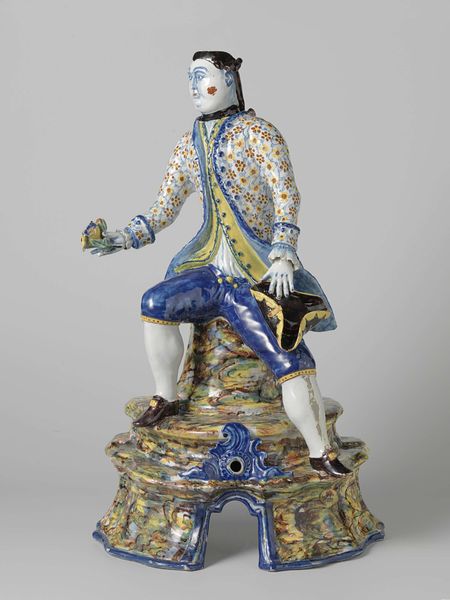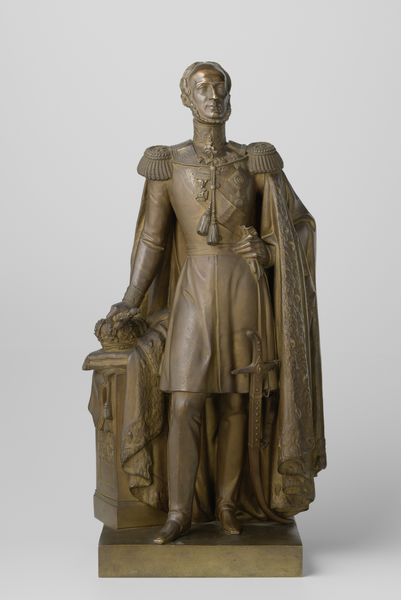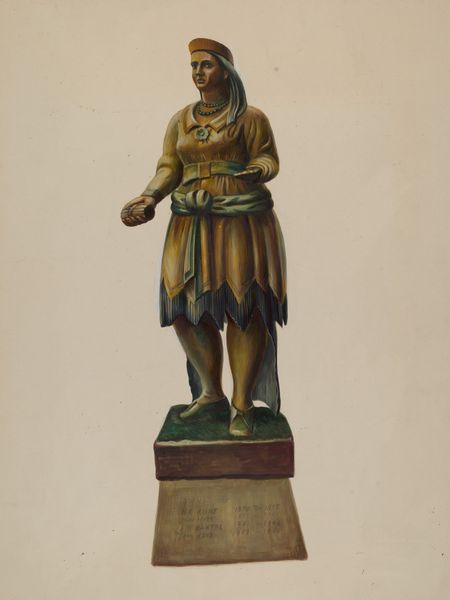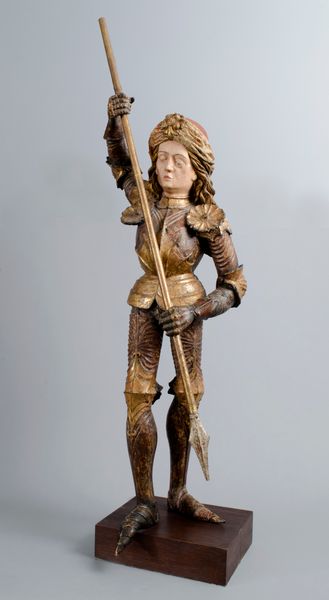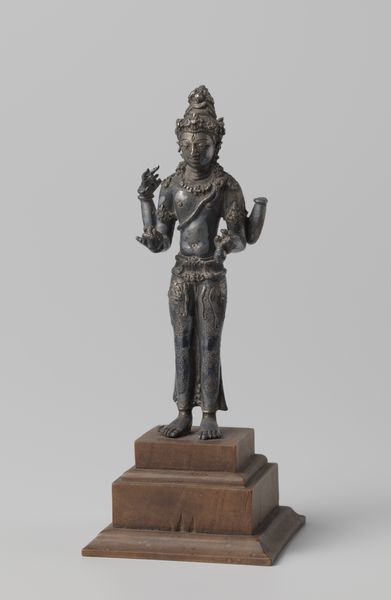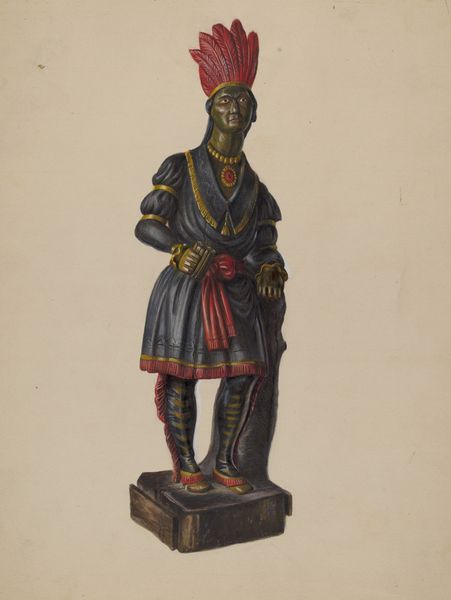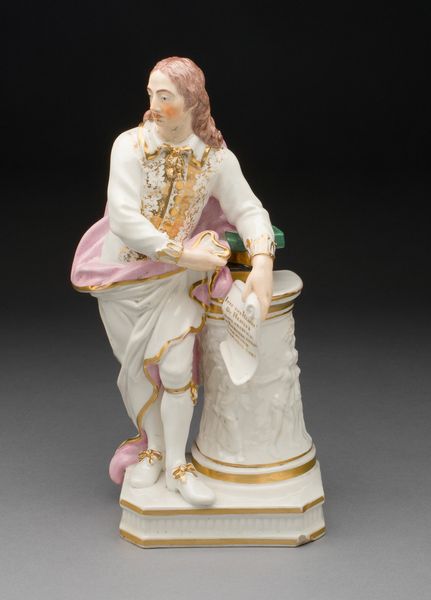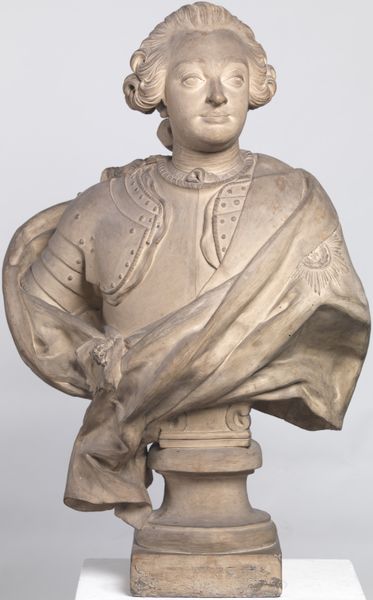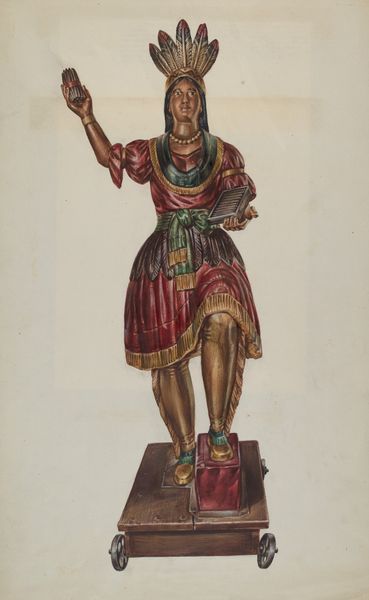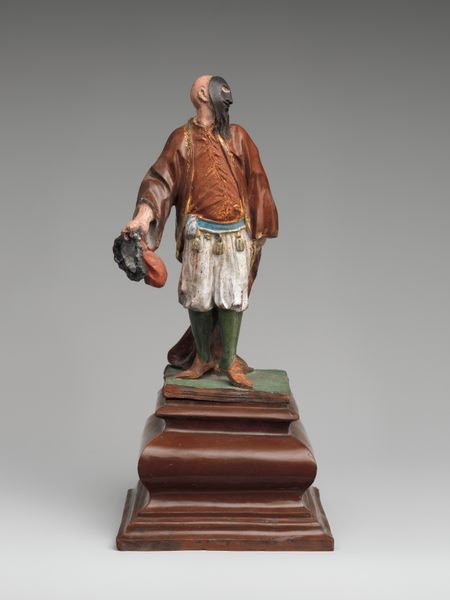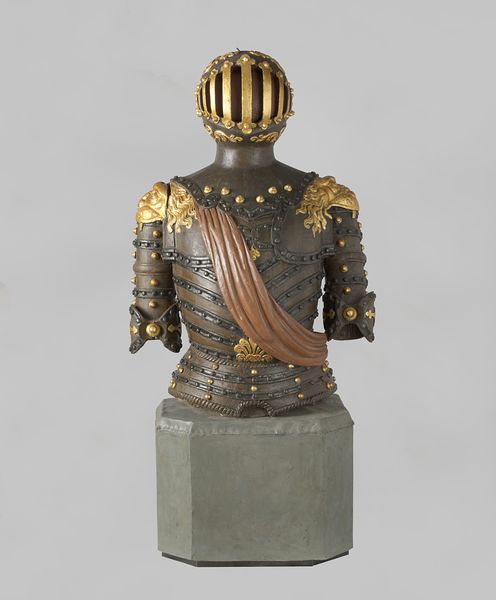
sculpture, wood
#
portrait
#
baroque
#
sculpture
#
sculpture
#
wood
Dimensions: height 169 cm, width 70 cm, depth 45 cm, height 83 cm, weight 43 kg
Copyright: Rijks Museum: Open Domain
Curator: Here we have an impressive wooden sculpture, “Stadholder William II, Prince of Orange,” believed to have been crafted between 1647 and 1650. Editor: Wow, it’s quite striking. The armor seems incredibly detailed for a wooden piece. Almost gives the impression of cool authority despite the static medium. Curator: Exactly! The sculpture’s production coincides with William’s brief but influential reign. Considering the craftsmanship involved in meticulously carving wood to resemble metal armor, how do you think this reflects broader social values? Editor: It points towards an interesting interplay of labor and display. The detailed imitation of armor using wood speaks to both a fascination with martial prowess and a level of artisanship intended for aristocratic consumption and propaganda. A simulacrum of power for a leader facing increasing conflicts with the States-General. Curator: That tension is key. During the Baroque era, Dutch society was experiencing massive socio-political upheavals. Sculptures such as this served to assert authority but were also part of the broader visual vocabulary shaping national identity and ideals of leadership within specific class and political factions. Do you think placing it in the Rijksmuseum contextualizes this piece differently? Editor: Undoubtedly. Presenting the sculpture here imbues it with national historical significance, turning a symbol of a specific era's political struggles into an icon within the national narrative. Also, consider how it is made: what are your thoughts about the original tree from which the statue came from? I mean where it was located? Curator: Well, its anonymous origin emphasizes the collective efforts shaping imagery. Focusing on what type of workshop made it shows labor networks that would ultimately legitimize power structures through artistic mediums like the statue. I imagine it must have come from somewhere important to highlight local craftsmanship, in line with William's emphasis on "native" talent. Editor: Absolutely. Overall, looking at it through that lens deepens our grasp on what such public imagery meant in this tumultuous historical period. Curator: It allows for the recognition of not just a historical record, but an assertion of dynastic continuity within broader civic life and the construction of early Dutch national identity. Editor: A powerful artifact that showcases Dutch heritage and societal norms!
Comments
No comments
Be the first to comment and join the conversation on the ultimate creative platform.
